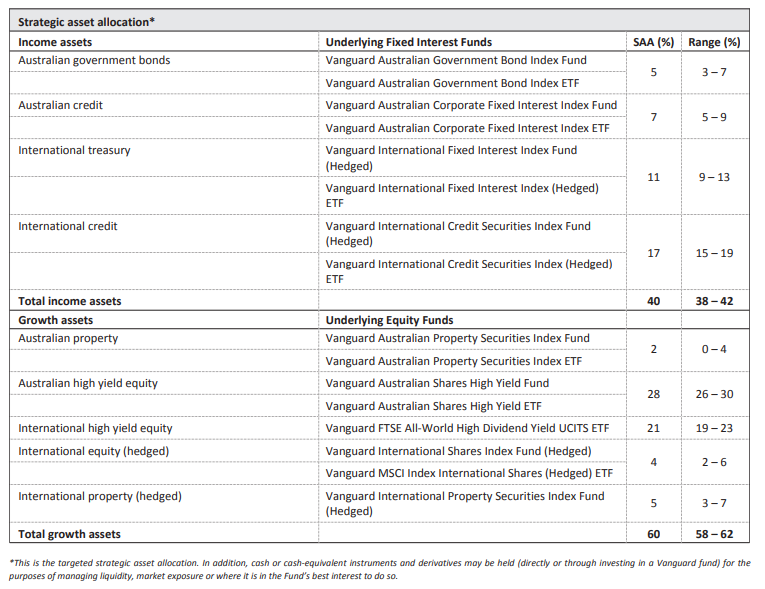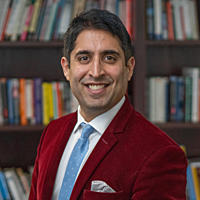Vanguard Diversified Income ETF – A smarter way to earn income?
Please note this interview was recorded on 11 March 2025.
Fund profile
- Name of the fund and ASX ticker: Vanguard Diversified Income ETF (ASX: VDIF)
- Asset class: Multi-asset (Australian equities, international shares, property securities and fixed income)
- Investment objective: The ETF seeks to provide regular income and some capital growth potential via exposure to a highly diversified, multi-asset portfolio.
Diversified funds have been gaining significant traction on the ASX, offering investors a one-stop-shop for broad market exposure. These funds cater to those who prefer to avoid the complexities of managing multiple strategies while keeping costs and effort to a minimum by investing in a single, core product.
However, while diversified funds have traditionally been geared towards growth and capital appreciation, there has been a notable gap in the market for an all-encompassing, passive income strategy. Vanguard is attempting to fill this void with the launch of VDIF.
Vanguard has established itself as the leading provider of diversified funds on the ASX, with its Vanguard Diversified High Growth Index ETF (ASX: VDHG) nearing $3 billion in assets. VDIF is the latest addition to its suite of diversified ETFs, offering investors a passive, globally diversified income stream within a single product.
To understand how VDIF generates income and where it fits in an investor’s portfolio, I spoke with Matt Cho, Head of Multi-Asset Solutions at Vanguard Australia. You can watch the full interview above or read the Q&A below.
Sure - the Vanguard Diversified Income ETF, or VDIF, is really an extension of our existing range of diversified ETFs. The difference being that there's an emphasis on income production. So VDIF provides exposure to over 12,000 securities across assets such as investment-grade corporate debt, and high dividend yield equities.
It has a 40% allocation to defensive assets and a 60% allocation to growth assets and is priced at 32 basis points. In terms of its investment objective, it seeks to provide regular income with some potential for capital growth.
It's really suited to buy and hold investors with a moderate risk appetite. We see this product being a great alternative for DIY income portfolios or single asset income portfolios that, for example, contain purely Australian shares.
We've really designed this product to be used as a standalone investment product for investors that desire in income.

What is the investment philosophy behind VDIF, and how does it guide the portfolio construction?
The investment philosophy is consistent with what we already apply to our existing range of diversified products. In that we focus on low cost and broad diversification through a strategic asset allocation approach that we think can provide consistent returns throughout the investment cycle.
The difference with VDIF is that we're placing greater emphasis on forecast income, which then manifests in the asset allocation and the underlying strategy selection.
Can you walk us through how the strategic asset allocation (SAA) is structured and the rationale behind key weightings?
As I mentioned, we're taking that strategic asset allocation approach. That means we're basing the asset allocation on our long-term expectations for risk and return, not reacting to short-term market moves. On the slide here, we're showing the asset allocation for VDIF.
As you'll see that there is a approximately 50% allocation to Australian equities within the growth allocation. So 50% of the 60% growth is for Australian shares. That's actually a stronger home bias than we run in our existing range of diversified ETFs.

That's in recognition of the fact that Australian equities historically paid higher dividend yields and that you get the benefit of franking credits.
If we also look at the fixed income exposures, you'll see that there's exposures to both Treasury and government bonds, as well as credit or corporate debt.
We've also intentionally biased the portfolio towards credit or corporate debt, noting that that helps to enhance the potential income, but recognising we want to retain those Treasury and government bond exposures so they can act as a ballast for the portfolio during periods of stress.
Income stability is a key concern for investors. How does VDIF manage risk while protecting income?
I often quote Harry Markowitz who said "diversification is the only free lunch in investing". That's the main way we manage risk with this in this portfolio in terms of volatility and in terms of income production is having a breadth of asset classes.
One of our core investment principles is balance. It's impossible to guarantee returns of certain investment markets on a year to year basis, and often the best performing asset class one year might be the worst performing asset class the next year.
So we’ve always said that you’re best placed to spread your risk across various asset classes to reduce that risk of loss, and we think it’s the same for income, diversifying your various income sources in a single portfolio.
Can you walk investors through some of the key features of the fund, particularly distribution frequency, likelihood of franking, and target yield?
VDIF has a quarterly distribution profile.
Importantly, there's no explicit income target or yield, rather, the income that the product produces will be a reflection of the income earned from the underlying investments.
But to give investors a sense as to the level of income, our long-term forecast income or yield for the product is 4.8%.
When we contrast that to Australian shares, our long-term assumption there is 4.6%, while for global developed markets is 2.5%. So investors could expect a income or yield broadly consistent with what you would get from Australian shares.
However, we'll be able to achieve that with less volatility due to the diversification we're achieving in the portfolio.
Some investors on Reddit are questioning why they should use VDIF over other diversified ETFs and income-specific strategies, like Vanguard’s Australian Shares High Yield ETF (ASX: VHY). How do you respond to that?
I think the competitive edge of our diversified products lies in our time-tested investment philosophy. We've been running diversified products in Australia for over 20 years. The ETFs have been available since 2017 and they've been solving problems like this since that time.
For investors, VDIF is really an extension of that expertise. It's a product that's providing income, some capital growth, but without sacrificing too much.
In terms of diversification characteristics, really the appeal lies in the fact that the product is simplifying the decision around selecting individual investments and combining them into a portfolio which is complex for an individual investor to do, but through a single trade, and thus an investor is getting a professionally managed diversified solution.
Vanguard Diversified Income ETF (VDIF)
The Vanguard Diversified Income ETF seeks to provide regular income and some capital growth potential via exposure to a highly diversified, multi asset portfolio. Provides access to Vanguard’s best investment thinking, in a ready-made portfolio that makes investing simple for you.
2 topics
3 stocks mentioned
3 funds mentioned
1 contributor mentioned


